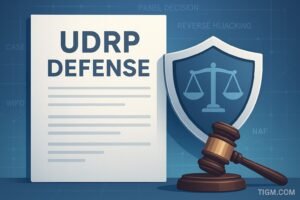A recent WIPO UDRP decision just handed down a rare and stinging rebuke, finding reverse domain name hijacking in a dispute over snsg.com. The complainant, SNSG Company, LLC—linked to California rapper SNSG (Manuel Alex Mendoza Cabanyog)—claimed trademark rights in SNSG dating from 2022 and tried to pry the domain away from a registrant who’d held it since 2003. Panelist Ian Lowe wasn’t having it, noting the 19-year gap between domain registration and the trademark, and formally labeled the UDRP filing an abuse of the procedure.
The facts here are straightforward and damning. The domain was registered in 2003, nearly two decades before SNSG Company secured its trademark. Evidence in the case shows the complainant attempted purchase negotiations around $60,000 before filing the UDRP, which is almost always a red flag that the complainant knew perfectly well the domain wasn’t registered in bad faith—they just didn’t want to pay market price. When the negotiation stalled, they rolled the dice on a UDRP complaint, presumably hoping the respondent would either ghost the case or fold under pressure.
Instead, the respondent showed up with receipts, and the panel had no trouble connecting the dots. There was no realistic way to prove bad-faith registration when the domain predated the trademark by nearly 20 years, and the attempted purchase made it clear the complainant understood the domain had legitimate value independent of their mark. The RDNH finding is a formal public record that SNSG Company misused the UDRP process, and it’s the kind of outcome that should make any brand think twice before filing a speculative complaint against a domain holder with a clean timeline.
Worth watching now is how often future UDRP panels are willing to explicitly record RDNH findings in brand-versus-investor disputes. The policy allows for it, but panels have historically been reluctant to pull the trigger unless the overreach is egregious. This case might signal a shift toward holding complainants accountable when they try to weaponize the UDRP against long-held, legitimate domain registrations.
For domain investors, the takeaway is clear: keep timelines and negotiation trails documented, especially for aged acronym domains that could attract late-arriving trademark claims. The respondent in this case won because they could prove registration predated the mark and because the complainant’s own negotiation attempts undermined their bad-faith argument. If you’re holding a four-letter .com from the early 2000s and a brand comes knocking, make sure your records are airtight before things escalate.
The decision is also likely to be cited in later cases involving post-registration trademarks chasing long-held premium domains. It’s a clean precedent for the principle that you can’t trademark your way into someone else’s domain just because you decided to brand around an acronym that’s been sitting in .com inventory for decades.
Read full here








